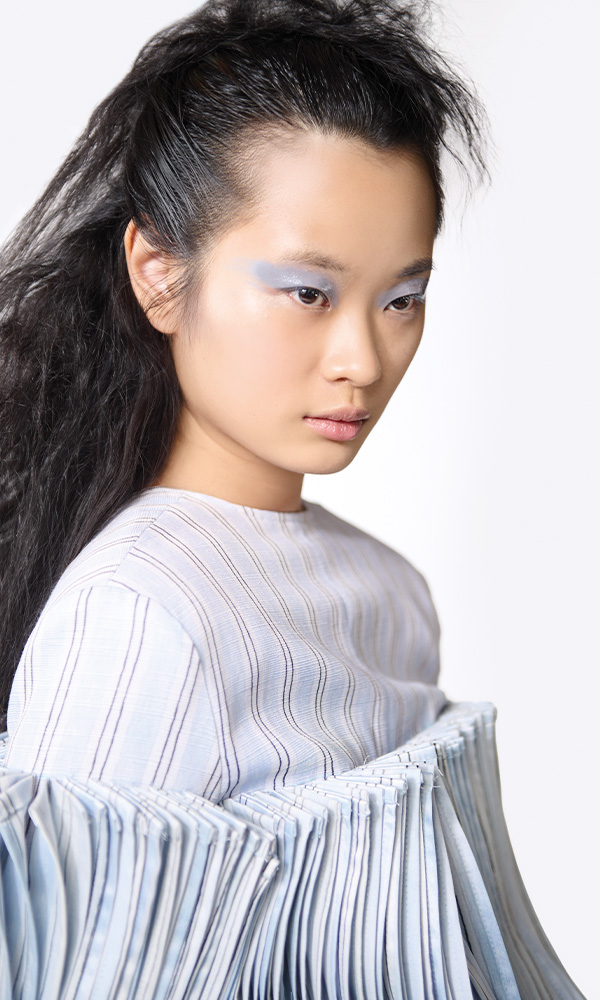XC | 90
Fashion Show 2025
Istituto Marangoni Milano presents XC | 90, the 2025 Fashion Show — a celebration of creativity and new perspectives in design. On 27 September at 7:00 PM (CEST), Galleria Meravigli in Milan will host the collections of ten selected third-year students from the Fashion Design Bachelor's programme, each showcasing their own vision of the future of fashion. The event highlights the school’s ongoing commitment to innovation, education, and style — while also marking the 90th anniversary of its founding in 1935.
ISTITUTO MARANGONI MILANO PRESENTS XC | 90 – THE FASHION SHOW CELEBRATING THE SCHOOL’S 90TH ANNIVERSARY
On 27 September 2025 at 7:00 PM, Galleria Meravigli in Milan will be transformed into a unique stage for XC | 90, the Fashion Show celebrating 90 years of Istituto Marangoni. Ten emerging designers will unveil collections that speak to the future of fashion — blending bold creative vision with contemporary language.
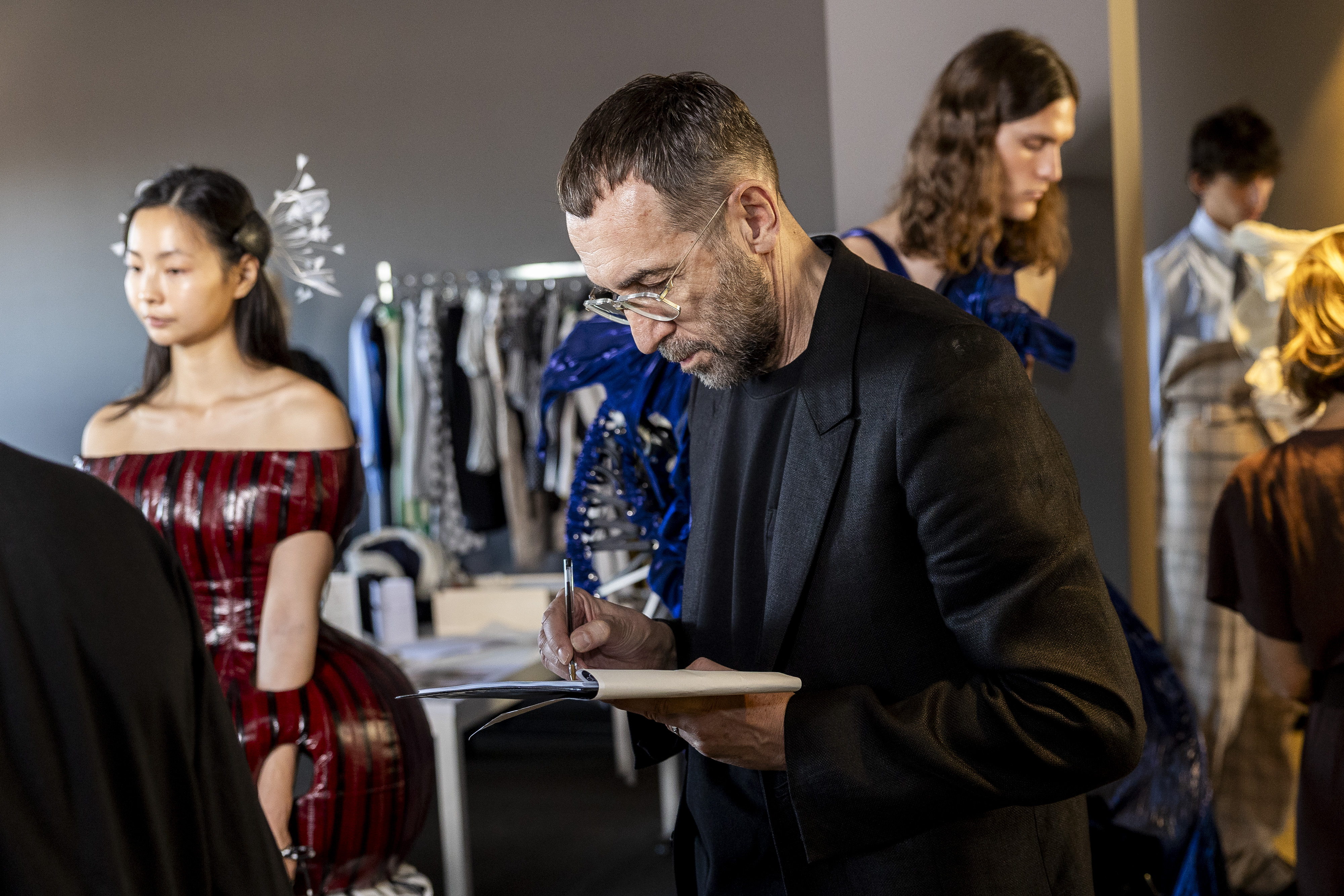
The title XC | 90 highlights the symbolic value of the anniversary: in Pythagorean tradition, the number 9 represents the highest stage before spiritual renewal, while 0 signifies not absence, but infinite potential. Ninety thus becomes not only a celebration of time passed, but a transformation into new possibilities.
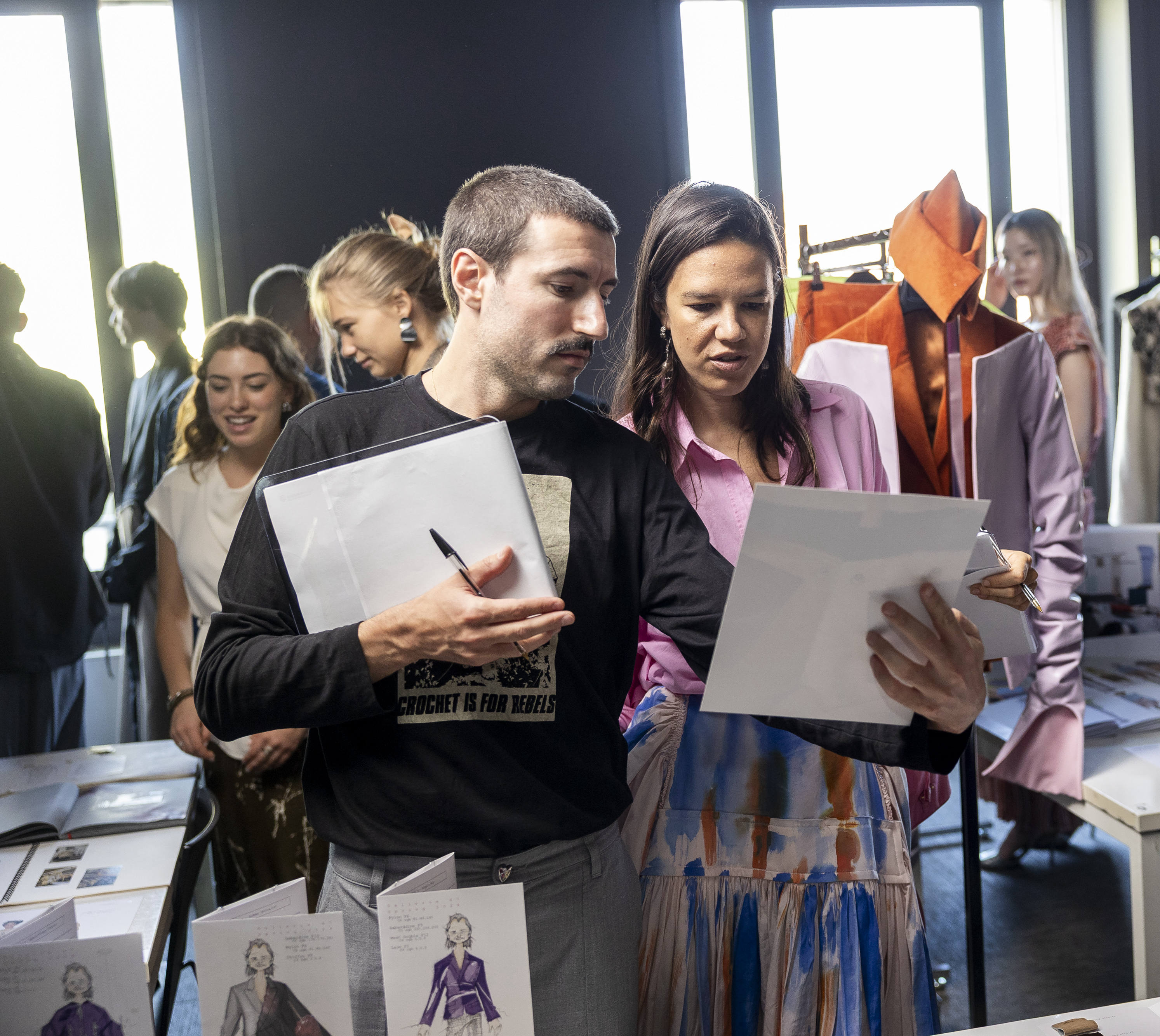
“XC | 90 is not just a fashion show — it is an act of awareness and projection. Celebrating 90 years of Istituto Marangoni means reflecting on our heritage and the contribution we've made to both Italian and international fashion. But above all, it means passing that legacy on to the new generations, inviting them to transform it” explains Paolo Meroni, School Director of Istituto Marangoni Milano.
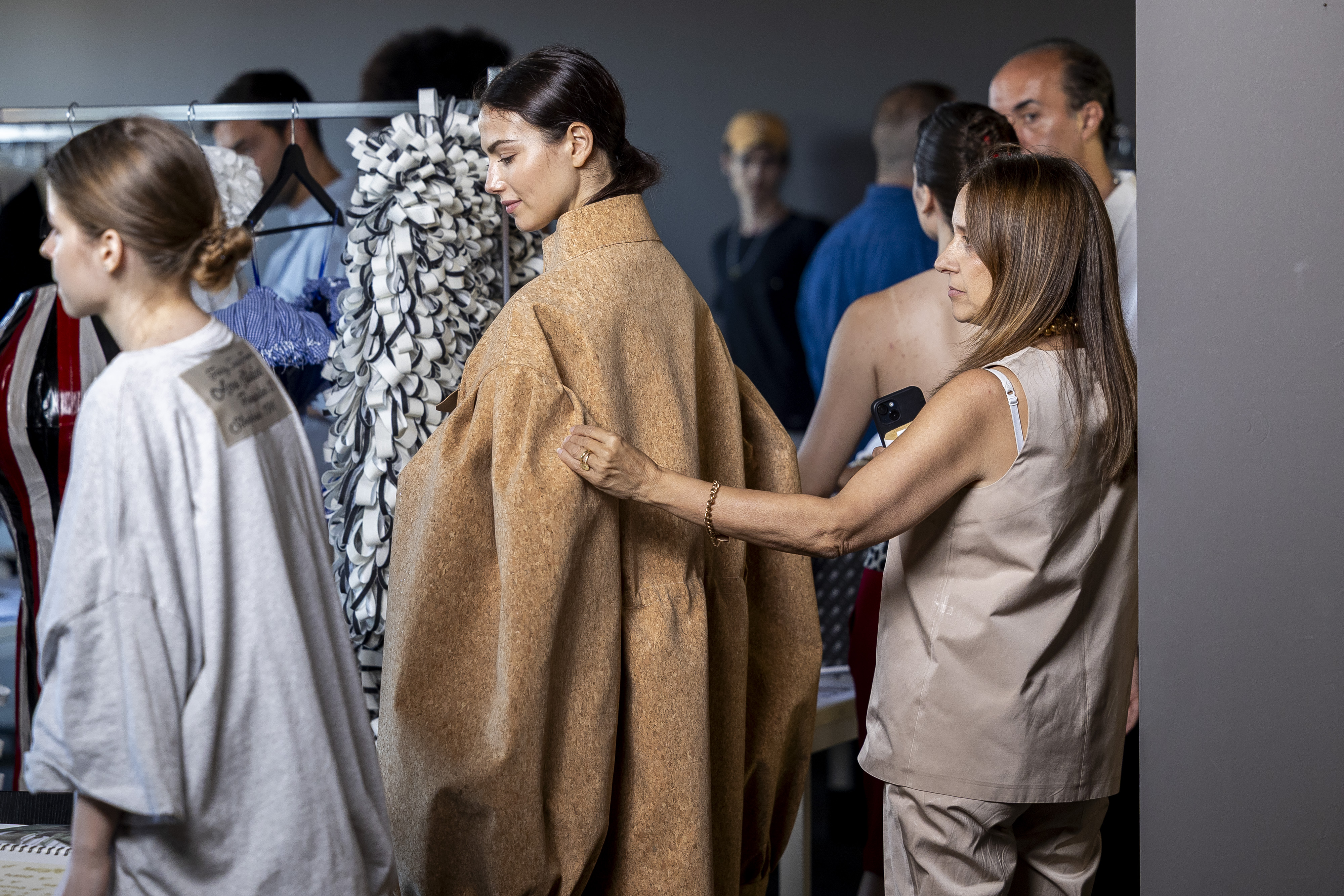
A jury of esteemed fashion industry experts selected the ten most promising talents among the third-year Fashion Design students featured in the show. The jury included: Alessandro Sartori, Artistic Director at ZEGNA; Antonio Masciariello, Heritage Director at Versace; Francesca Ragazzi, Head of Editorial Content at Vogue Italia; Francesco Scognamiglio, Creative Director of Maison Francesco Scognamiglio; Luca Rizzi, Pitti Tutoring & Consulting Director at Pitti Immagine; Marco Rambaldi, Creative Director of Marco Rambaldi; Sara Sozzani Maino, Creative Director of Fondazione Sozzani; Stefania Valenti, Managing Director of Istituto Marangoni; Silvano Rossi, Director of Human Resources at Versace; and Vincenzo Ferrante, Head of Global Wholesale & Franchise at MSGM. Their insight and expertise guided the final selection.
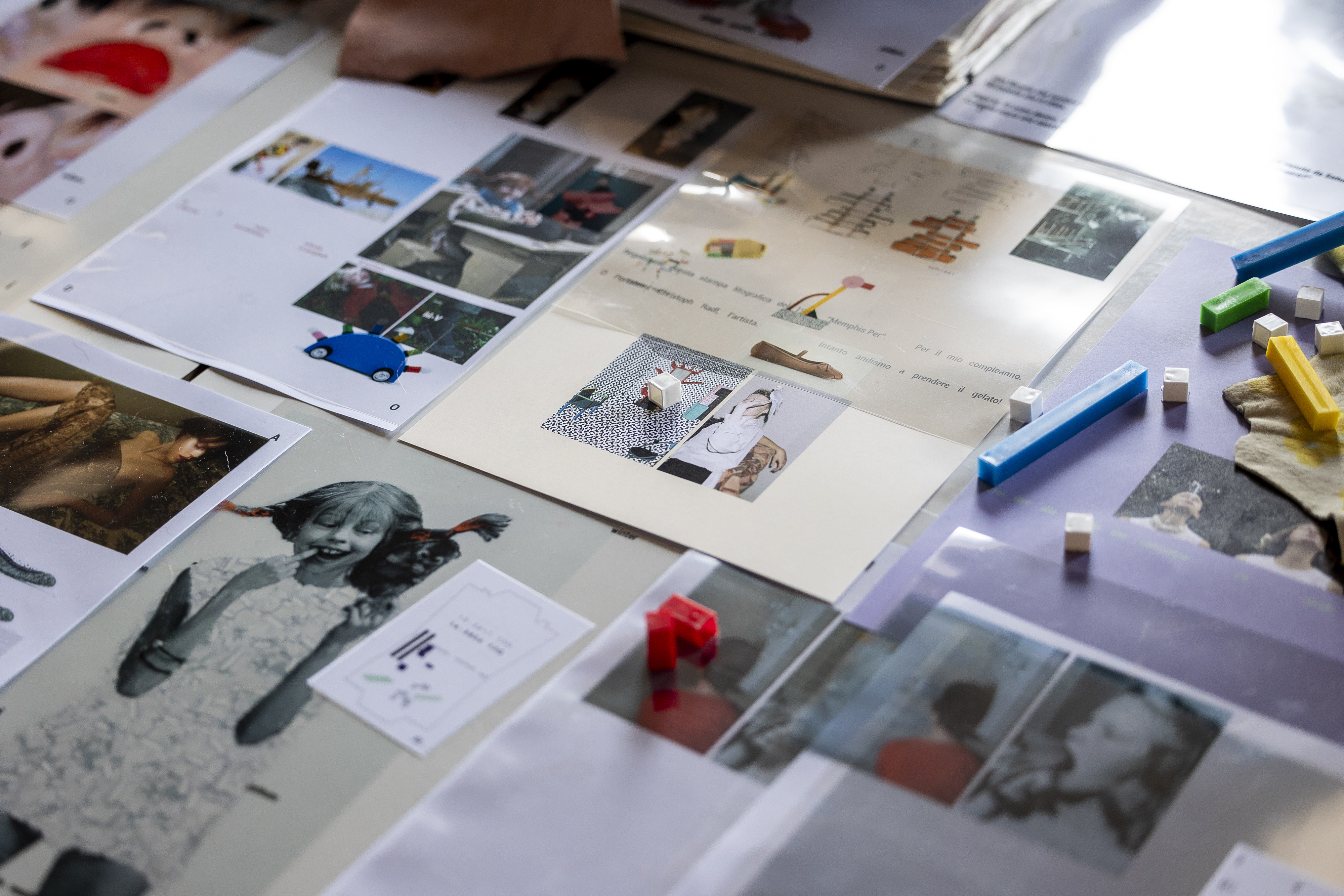
Accompanying the collections is a conceptually rich set design created by Diana Marian Murek, Director of Education at Istituto Marangoni Milano:
“The set design for XC | 90 was conceived as an abstract, evocative environment, featuring a site-specific installation made from an extroverted artificial membrane. It represents memory resurfacing — expanding, taking shape in space, projecting into the present and generating new, tangible scenarios"
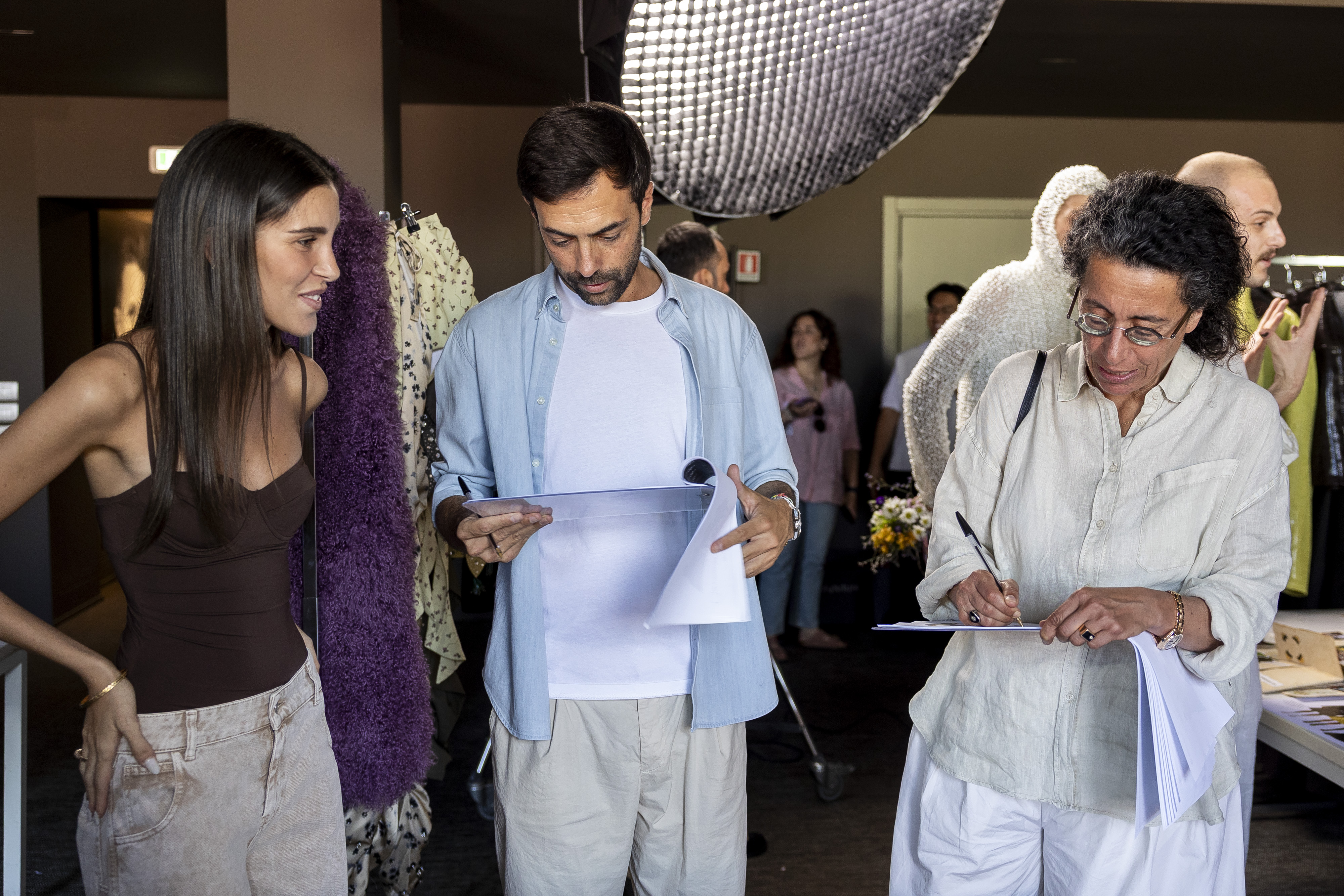
Production is curated by MONOGRID, a leading force in phygital experiences, merging creativity, innovation, and technology to craft immersive events. The exhibition journey is enriched by the curatorial project CODEX, which intertwines the perspectives of Fashion Styling students with the designers’ creations — reinterpreting them through a new editorial and symbolic lens. It is a return to the physicality of print as memory, object, and source of inspiration.
The sound design is by internationally renowned artist and composer Emiliano Zelada, who describes his vision as follows: “The sound composition for the show is designed to create a landscape that reflects the intersection of computational models and human creativity — a symphony of modern melancholy, enriched with AI-generated vocal sections.”
Completing the aesthetic experience, hair styling is supported by L’Oréal and make-up by KIKO, under the artistic direction of make-up artist Cosetta Giorgetti.
With XC | 90, Istituto Marangoni Milano celebrates nine decades of history and looks to the future with renewed energy, reaffirming its mission: to shape the protagonists of fashion through creativity, innovation, and style.
In collaboration with


BEATRICIA ROTARU
A ME VEL PRO ME
Between consciousness and the subconscious, the collection symbolically explores the theme of destiny: is it a choice we make, or something already written for us? Enter the Theatre of Life, where we’re faced with the question — are we authors or actors, directors or puppets? Each creation sparks an intimate dialogue with the self, within an infinite space of reflections and contradictions where logic fades and a predestined aesthetic takes over. The result is a suspended imagination, drifting between the echo of forgotten origins and the glamorous allure of the present.
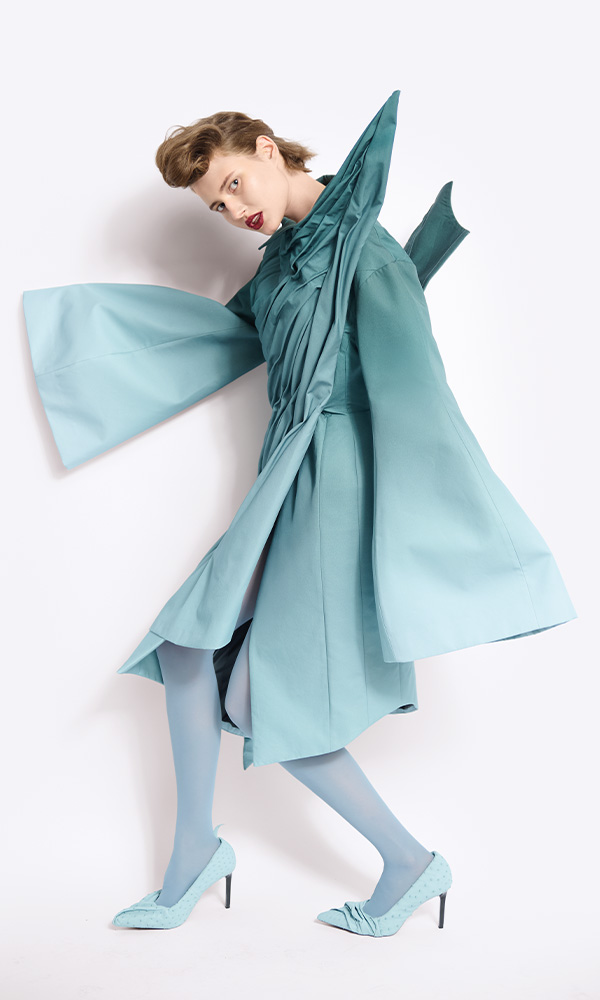
GIORGIA CANDIDA SORBILLO
VADO. C’È L’ALTALENA LIBERA
This collection doesn’t follow a line — it leaps over it. It’s an emotional, rebellious, and deeply human design, infused with the irreverence of Pippi Longstocking, the structural irony of Ettore Sottsass, and the freedom of form. It doesn’t ask to be understood immediately — it wants to be experienced, touched, taken apart, and reimagined. Shapes interact without asking permission, giving life to playful identities and liminal spaces where irony dresses up in unexpected proportions.
Like Pippi Longstocking, who laughs as her braids defy gravity — oversized shoes, an even bigger heart. Or like Sottsass, who reminds us that order is just a convention joy can dismantle — a Memphis cabinet that is both a joke and a serious design statement. On a swing, you’re not going anywhere — but your view expands: between Pippi’s laughter and Sottsass’ chaos, play becomes purpose, and lightness becomes vision.
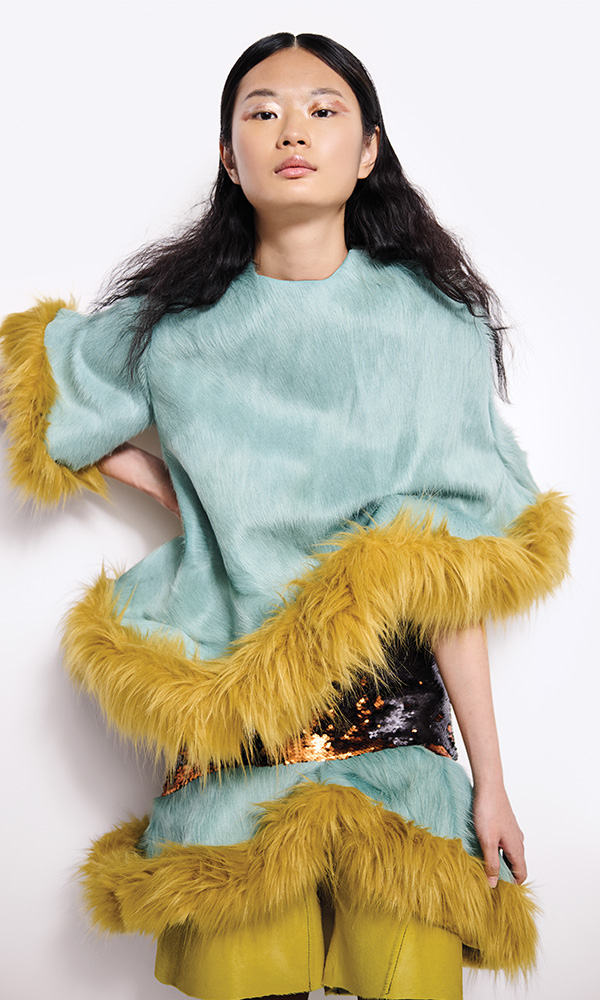
MARESIA CRISTINI
_RESTO IN SOSPESO_
A collection born from an inner urgency: the need to break free from the tyranny of singularity. When asked “Who are you?”, it answers with a multitude. It’s an ode to the complexity of being — the right to appear fragmented, incoherent, polymorphic. A symphony of dissonance, colliding desires, and contradictory thoughts that somehow coexist.
Deliberately off-balance, yet meticulously composed. Imperfect by choice, precise in design. Each garment becomes a fragment in an emotional mosaic where madness meets harmony, contrast hides a secret coherence. Seams trace silhouettes in flux — suspended between the glamour of the past and the infosphere of the future. Nothing aligns, yet every element finds its meaning.
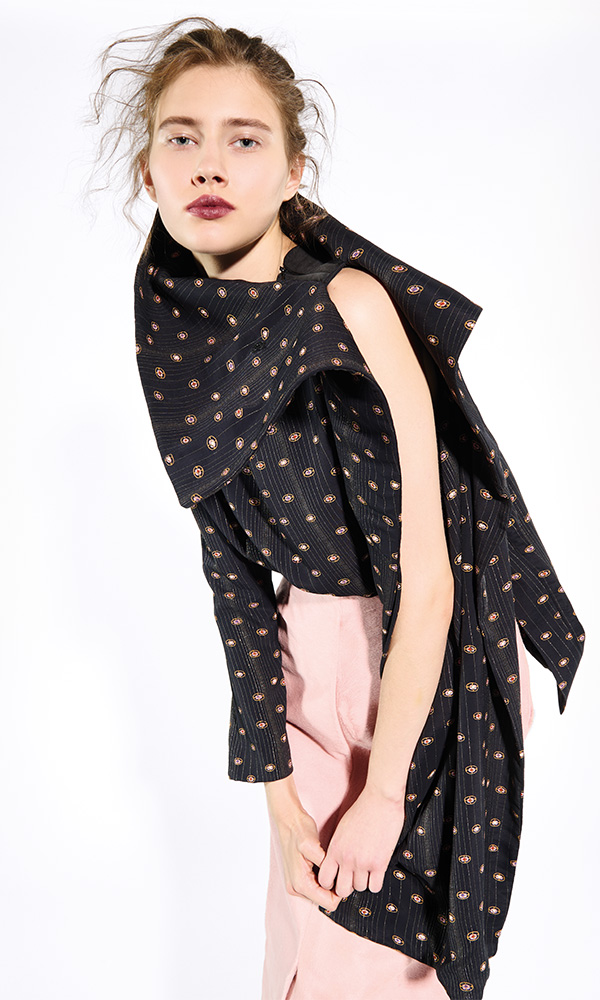
MARCO TRULLI
OTIA LIBERRIMA
In a world where the modern man is often bound by convention and expectation, Otia Liberrima offers a poetic escape — an invitation to rediscover a freer, more instinctive self. The classical codes of menswear, long symbols of formality and restraint, are reimagined as living canvases, shaped by the breath of nature.
Soft petal pinks thread through seams, floral embroidery blooms across fabrics, vibrant hues flow organically from one piece to the next. Where structure loosens, nature takes over — formality unravels to make room for wild spontaneity. These are quiet revolutions: never loud, but radically free. A new kind of sartorial softness emerges, marked by the untamed flourish of embroidery in bloom.
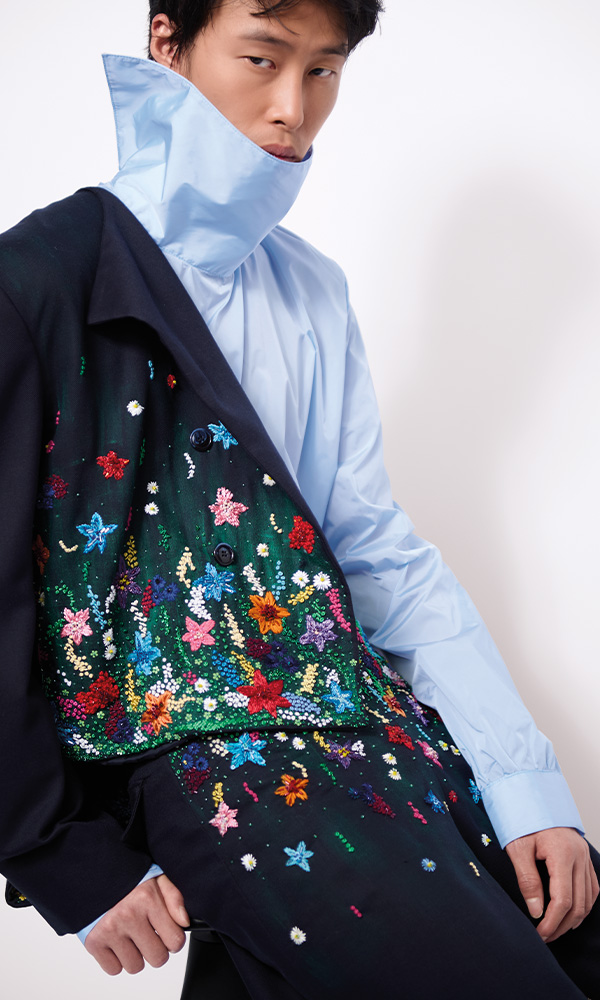
JACOPO MARIA ARENA
DIVERSO
This collection begins as a radical critique of traditional gender categories, challenging the boundaries society has drawn through the language of fashion. Its inspiration reaches back to Plato’s Symposium and the figure of the androgynous being — one that contained both original genders, giving rise to a third possibility: free, boundless, undefined.
Not here, not there, but in every in-between space: an alternative path that is limitless, elusive. It is a silent refusal to be defined by the external gaze or tamed by the inner voice urging us to shrink, to soften our edges, to disappear.
In this way, the collection becomes more than an aesthetic exercise — it becomes an opening. An invitation to reclaim the freedom to exist as oneself, beyond names, beyond gender, beyond fear. Not a definitive answer, but a space that welcomes infinite possibilities.
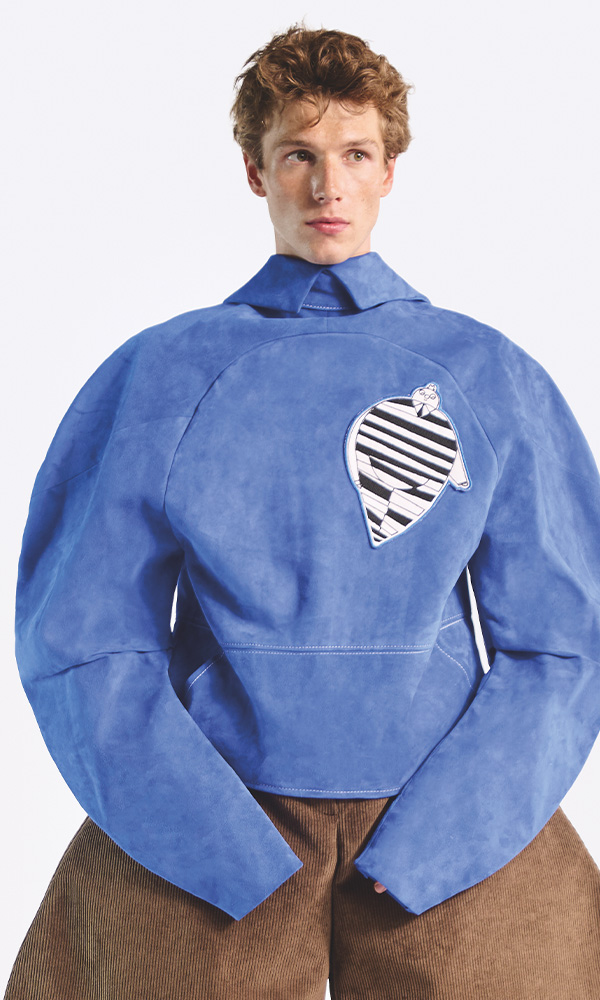
VITTORIO TINTI
GALLERIA 67
Galleria 67 draws inspiration from the landmark 1967 exhibition at Galleria La Bertesca in Genoa — a founding moment of Arte Povera. Just as that movement challenged the notion of the finished artwork to elevate raw materials and conceptual depth, this collection reflects on the need to break from legacy in order to forge new creative languages.
The silhouettes emerge at the intersection of tactile leather and the rawness of the unfinished, where material itself becomes narrative. Concrete and flowers, leather and nylon, studs and embroidery — everything collides in a continuous tension between memory and rejection, the complete and the incomplete.
References to Janis Kounellis and Donald Judd intertwine with the cosmopolitan imagery of American cowboys, forming an open dialogue between past and present in search of a truth that is more intimate, more alive.
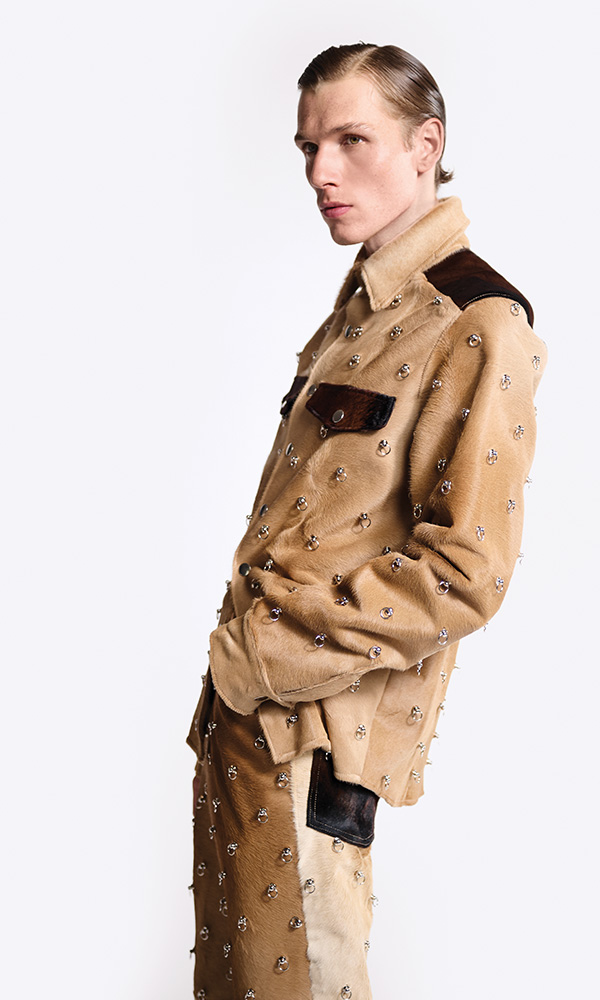
KYUNGHOE KU
RIBELLIONE LEGACY
The inspiration stems from the 1937 British military uniform — a symbol of authority. Its structured form is reinterpreted through tailoring techniques to reveal a restrained, underlying tension.
Traditional elements like the shirt, tie, and pockets are deconstructed into architectural volumes and tactile transitions. The silhouette retains its composure, yet beneath the surface lies a deliberate, silent, and elegant rebellion.
A dialogue unfolds between discipline and dissent, between precision and emotion — where authority is worn, but never obeyed.
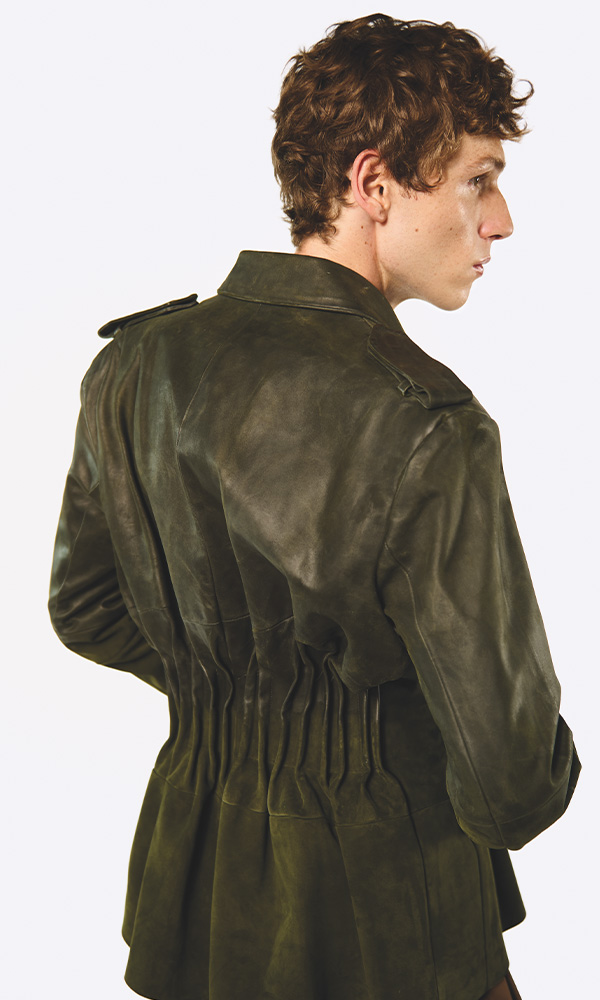
KATSIARYNA YERMAKOVA
RESIDUE
Inspired by a scene from Tarkovsky’s The Sacrifice, the collection evokes two landscapes: the elusive stillness of a childhood in Belarus — surfacing from the designer’s subconscious — and the wind-carved cliffs of the Seven Sisters. A dialogue between memory and nature that seals a time slipping away, both familiar and dreamlike.
The garments draw from rural traditions and early memories, reimagined through playful proportions that shape new stylistic archetypes. Outerwear-inspired silhouettes, designed for movement and protection, transform into fluid forms layered with memory and cultural echoes.
It is a quiet reflection on what remains — what we carry with us when everything else is left behind. A vision of “home” not as a place, but as an inner presence: intimate, indestructible.
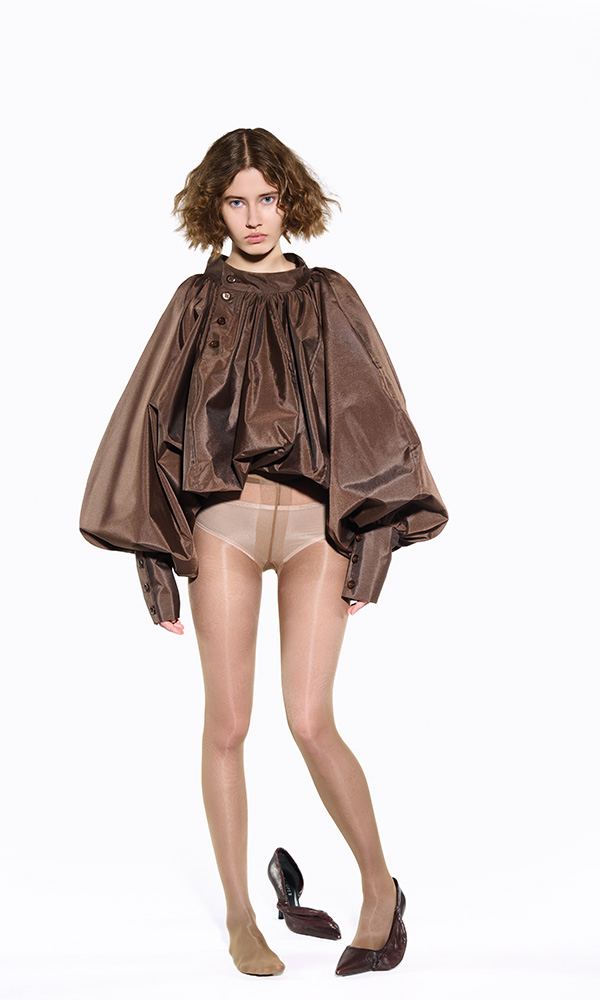
ASIA PECORINI
PSICOFORME
The collection emerges as an escape from reality through hypnosis — a space ruled by instinct and irrationality, a dreamlike state that’s both soothing and disorienting, where images appear warped, distorted, filtered through an altered lens.
The garments feature exaggerated volumes and sculptural silhouettes, shaped by structured fabrics and rigid leathers that amplify form. Beneath the surface, a surreal elegance pulses — where the logic of dreams becomes visual tension, and aesthetics take on a visionary dimension.
Expanded shapes, hallucinatory curves, and material abstractions create a visual language of altered perceptions, distortions, and refinement: a dreamlike minimalism that challenges reality — and reimagines it.
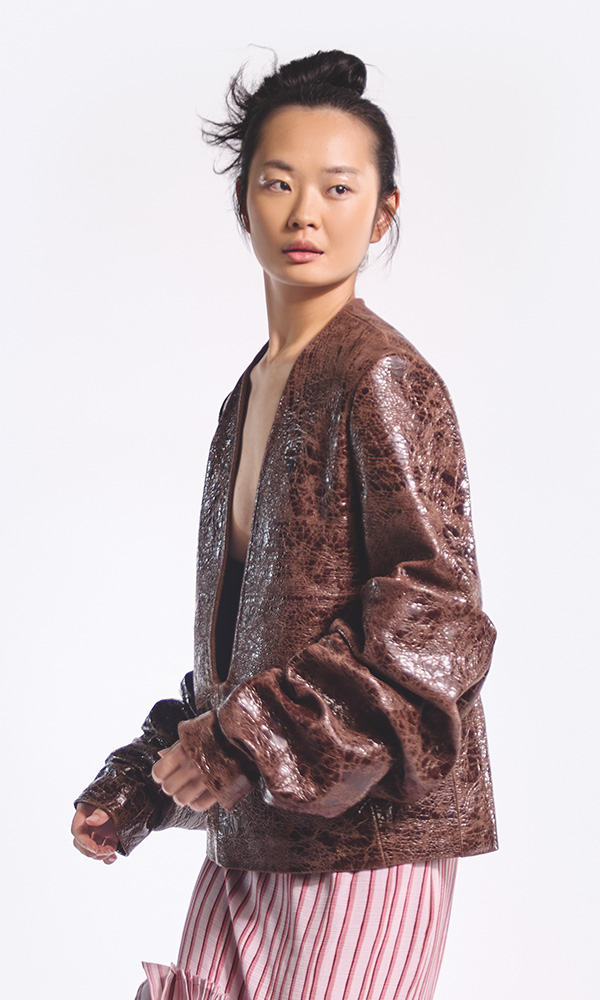
GIUSEPPINA LAMIRANDA
ANCESTRAL RHYTHMS
This collection was born from an ancient memory, held in the hills of Lucania, where the Carnival of Tricarico casts its spell year after year. In this archaic ritual, man and animal merge, masked as Bull and Cow, evoking the transhumance — an ancestral journey of sounds, footsteps, cowbells, and silences.
The masks, I’Mashkr, carry the breath of the land and the rhythm of peasant time, in a collective dance where the sacred meets the profane, legend blends with reality. From this vision, the collection takes shape: a herd in motion, a symbolic procession where every gesture becomes celebration.
The silhouettes echo the softness of pastures and the strength of mountain ridges. Fabrics — both light and tactile — layer like overlapping memories, while long ribbons float through the air like ritual chants, amplifying movement and collective trance.
A choreography of earth and spirit, ancient and contemporary — rooted in memory, yet alive, untamed, and worn.
